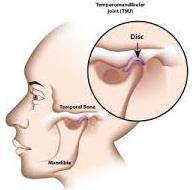The temporomandibular joint (TMJ) is the joint that connects your jaw to your skull. You have one joint on each side of your jaw. When this joint is misaligned, injured or damaged, it can lead to localized pain in your jaw joint and in the muscles that control jaw movement. This syndrome is commonly known as temporomandibular disorder (TMD).
The exact cause of a person’s TMJ disorder is often difficult to determine. Common causes of it includes injury to the teeth or jaw, misalignment of the teeth or jaw, teeth grinding, poor posture, stress, arthritis, and gum chewing.
Signs and symptoms of temporomandibular joint (TMJ) disorder include:
• pain in the jaw joint,
• jaw clicking and popping,
• ear pain/earache,
• popping sounds in ears,
• headaches,
• stiff or sore jaw muscles,
• pain in the temple area, or
• locking of the jaw joint.
Temporomandibular joint (TMJ) disorder often responds to home remedies, including ice packs to the joint, over-the-counter nonsteroidal anti-inflammatory drugs (NSAIDs), avoiding chewing gum, massage or gentle stretches of the jaw and neck, and stress reduction.
When home treatment does not work, medical treatment for temporomandibular joint (TMJ) disorder includes dental splints, Botox injections, physical therapy, prescription medications, and in severe cases, surgery.
The prognosis for early detection of TMJ syndrome is generally good as the disorder can usually be managed with self-care and home remedies.


